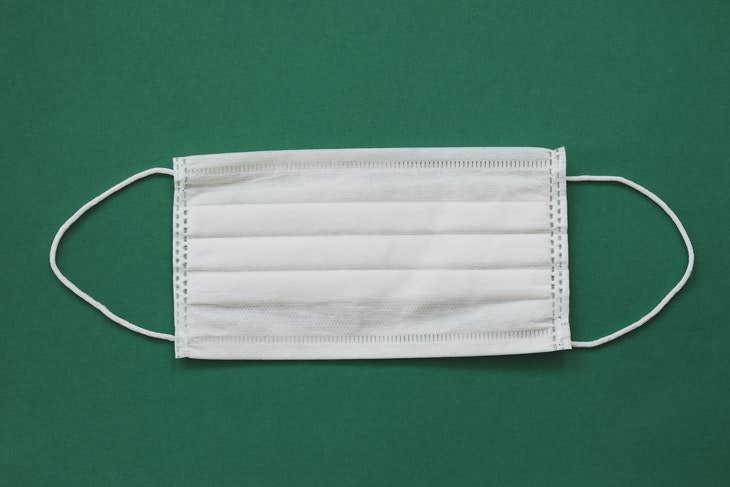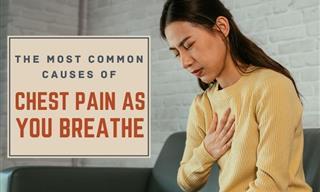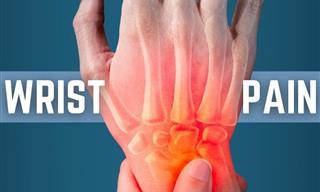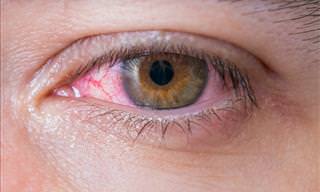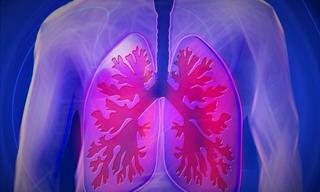Respiratory infections
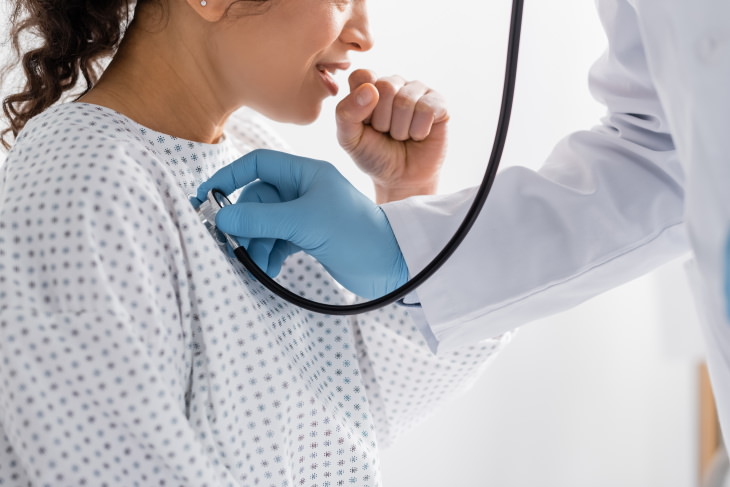
For many people, the first concern they think of when someone experiences painful breathing is pneumonia. As you will find out later, that’s not necessarily the case, but respiratory infections are certainly a possible cause of painful respiration. Even though the lungs don't have pain receptors, surrounding tissues can become inflamed, tender, and painful, so lung conditions can actually cause pain while breathing.
Painful breathing caused by respiratory infections is more pronounced when you take a deep breath or lie down, and it’s rarely the only symptom. Shortness of breath, coughing, wheezing, fever, chills, fatigue, night sweats, or other cold and flu symptoms usually co-occur with painful respiration and help point your physician in the right direction.
The following respiratory infections can cause pain with breathing:
- Pneumonia - an infection of the lungs caused by either a virus, bacterium, or fungus.
- Bronchitis - an infection of the bronchi, which are the tubes in your lungs that carry air throughout the lungs.
- Pleurisy - an infection of the pleura, a membrane that lines the lungs and separates it from the rest of the thoracic cavity.
- Tuberculosis - a serious lung infection caused by the Mycobacterium tuberculosis bacterium (uncommon in the US but common around the world).
- Shingles - a dangerous infection that, in rare cases, can cause viral pneumonia. The condition is caused by the same virus that’s responsible for chickenpox - the Varicella zoster virus.
COVID-19
Here’s an important side note. Pain with breathing can be a sign of severe COVID-19 - according to the Centers for Disease Control and Prevention (CDC). If you were diagnosed with Covid or experience any of the following symptoms, seek immediate medical help:
- Loss of taste and smell
- Sore throat
- Fever
- Chills
- Fatigue
- Muscle pain.
Painful breathing is also sometimes reported in patients with long Covid or post COVID-19 syndrome for as long as 3 months after the initial COVID-19 diagnosis.
Other lung conditions
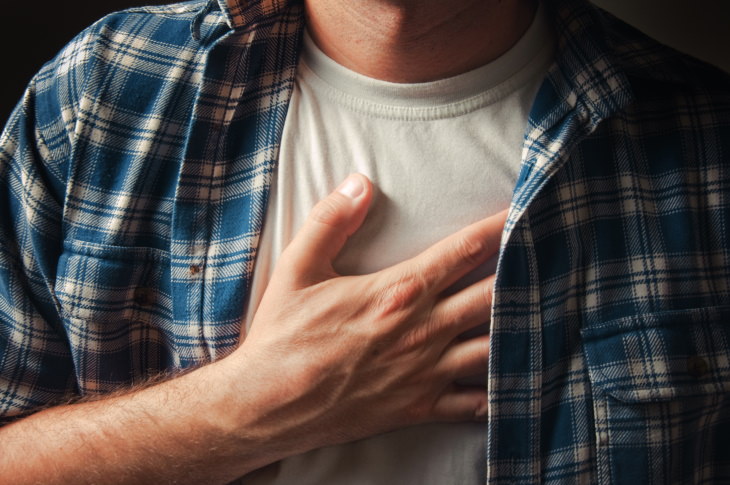
If you experience difficulty breathing and pain with respiration, don’t assume that an infection is to blame. Certain lung injuries and disorders can produce identical symptoms. Some of the most common respiratory conditions that fall within this group are:
- Pneumothorax - a medical emergency when air enters the pleural cavity and causes either partial or complete lung collapse. Severe chest pain and shortness of breath are the most common symptoms. Pneumothorax is usually a complication of chronic lung issues, severe lung infections, or injuries.
- Pulmonary embolism - another emergency that occurs when a blood clot travels from other parts of the body and gets stuck in the lungs. This is the most common life-threatening cause of pain with breathing, accounting for 5-21% of painful respiration cases. Pulmonary embolism can develop as a result of deep vein thrombosis, heart disease, or as a side effect of surgery.
- Pulmonary infarction - the death of some lung tissue caused by the restriction of blood supply.
- Chronic lung issues, such as chronic obstructive pulmonary disease (COPD) and asthma.
- Lung injuries caused by chemicals or smoke.
- Certain cancers, such as lung cancers or mesothelioma (cancer in the pleura).
Conditions that affect the musculoskeletal system

In some cases, pain in the chest may not be linked to your vital organs at all. The chest area contains a lot of bones, cartilage, muscles, and other connective tissue that could be responsible for pain while breathing. This pain can get worse when you breathe more deeply or with certain movements. The pain may also get better when you reposition the body or move after a long period of sitting or standing.
Here are a few of such conditions:
- Problems with the thoracic spine, such as nerve compression, thoracic osteoarthritis, degenerative disc disease, etc. With a pinched nerve, the back pain can sometimes even radiate to the hand and mimic the symptoms of a heart attack.
- Rib fracture - sudden pain that gets worse when you breathe more deeply or cough. This is a medical emergency, as the broken rib can potentially puncture vital organs or blood vessels.
- Costochondritis - a relatively rare inflammatory condition affecting the cartilage that connects the ribs and the breastbone. It causes sharp pain and tenderness in the breastbone that can mimic a heart attack. The causes of costochondritis are not always identifiable, but the condition can develop as a result of chest injury, respiratory infections, and severe coughing. Costochondritis sometimes goes away on its own.
Heart-related conditions
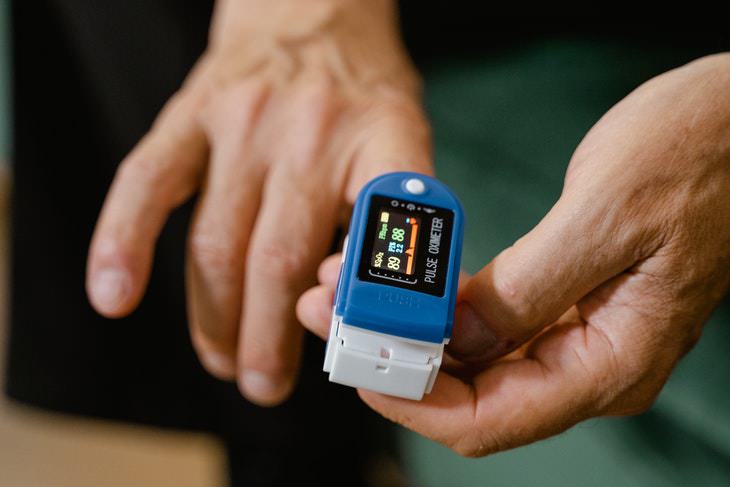
Several types of heart disease can trigger chest pain while breathing, shortness of breath, or other types of breathing discomfort. The pain can also spread to the arm, shoulder, neck, and jaw. Statistical data reveals that more than a quarter of all patients with heart-related health issues seek medical help because of breathing discomfort.
Some other symptoms that point towards a heart-related condition are an irregular heartbeat, lightheadedness, heart palpitations, excessive sweating, dizziness, burning sensations, and nausea.
What conditions can produce these symptoms? There are a great many of them, but we feature some of the most serious and common ones below:
- Heart attack - serious medical emergency characterized by the restriction of blood flow to the heart.
- Heart failure - another potentially life-threatening condition that occurs when the heart isn’t capable of effectively pumping blood.
- Pericarditis - a condition that arises when the pericardium, a fluid-filled membrane that protects the heart, becomes inflamed. Sharp chest pain that improves with sitting upright or leaning forward is a common sign of pericarditis.
- Myocarditis - an inflammation of the heart muscle (myocardium). Myocarditis can affect the heart's ability to pump blood. Infections, adverse drug reactions, or other inflammatory conditions can trigger the condition. Shortness of breath, sharp chest pain, and an irregular or fast heartbeat are the primary symptoms.
Gastroesophageal reflux disease (GERD)
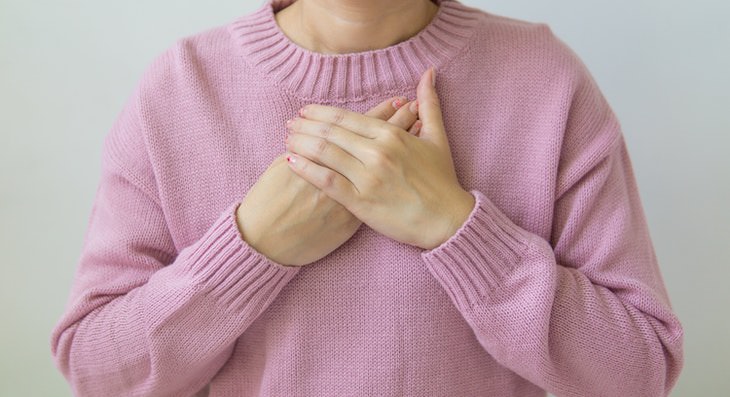
Gastroesophageal reflux disease (GERD), commonly known as acid reflux, is a health condition that occurs because the muscle that prevents stomach acids from going up into the esophagus is malfunctioning. When the acids leak out into the esophagus, they damage and irritate the lining of the esophagus, which usually causes a burning sensation in the chest known as heartburn.
GERD is very common - it affects 1 in 5 Americans. Although heartburn is the most common symptom of this condition, some patients also report a chronic cough and pain with breathing. However, the majority of symptoms associated with GERD still involve the digestive system - difficulty swallowing, nausea, and bad breath.
Even though GERD isn’t considered a life-threatening condition, it could lead to complications and should be addressed by your doctor.
Related Article: 6 Signs of Acid Reflux
Panic attacks

Panic attacks are extreme and unbearable. Sudden waves of anxiety and fear, often accompanied by shallow breathing, are the hallmark of panic attacks. For those who have never experienced a panic attack, the symptoms can resemble a heart attack or a respiratory issue, but symptoms usually go away after 20-30 minutes.
Panic attacks occur as a response to stress, excessive exercise, or even after drinking too much coffee. These events send your body into stress mode, and you will start breathing very quickly. The resulting hyperventilation usually causes even more troubling symptoms, including painful breathing, heart palpitations, sweating, shortness of breath, and losing the sense of reality.
Some people experience panic attacks regularly, whereas others only get them once or twice, if ever. Breathing techniques and spending time in a calm and safe space can help a person experiencing a panic attack recover more quickly.
Related Article: How to Help Someone Having a Panic Attack
When is painful respiration a sign of a medical emergency?
Painful respiration can point to a number of very serious conditions, so it shouldn’t be taken lightly. Any unexplained chest pain, even if it seems minor, is best reported to a medical professional. Your healthcare provider can help you rule out serious conditions or make sure that the condition you have isn’t progressing.
Contact emergency services IMMEDIATELY if you have chest pain with any of the following symptoms:
- Fever
- Shortness of breath
- Gasping for air
- Rapid breathing
- Choking
- Dizziness
- Confusion or loss of consciousness
- Sweating profusely
- Pale skin or blue lips, toes, or fingers
- Coughing up blood.
Share this information with family and friends!
 Go to BabaMail
Go to BabaMail



